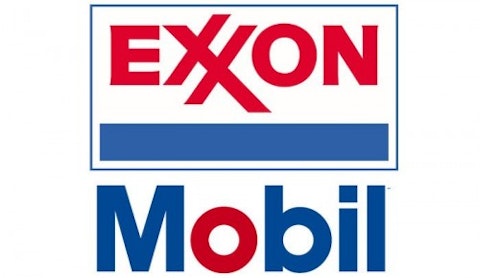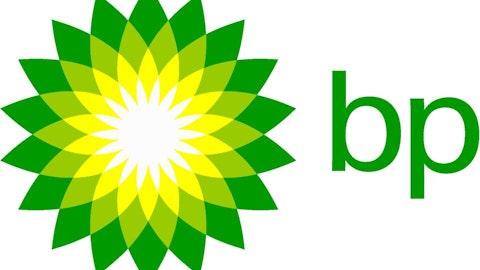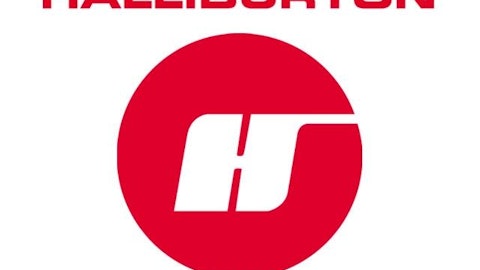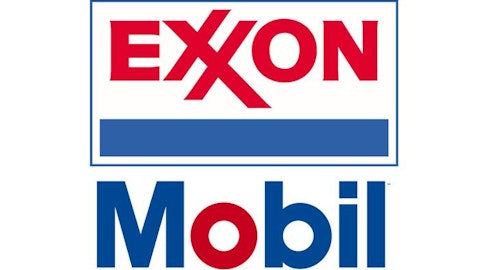In the past several days, the price of natural gas tumbled lower. Despite its recent fall, the price of natural gas is still higher than where it was trading last year. Will natural gas continue to fall? How will the recent developments in the natural-gas market affect leading oil and gas producers, such as Exxon Mobil Corporation (NYSE:XOM)? Let’s also take a look at the liquefied natural gas (LNG) market.
Storage
Natural-gas storage remains low compared to last year’s levels and compared to the five- year average. During May, the storage buildup was 276 Bcf. In comparison, during the same time frame in 2012, the buildup was 168 Bcf. If the buildup pace continues to pick up, this could suggest that the natural-gas market is loosening up.
The chart below shows the weekly natural-gas price and storage in recent years.

Natural gas consumption and production
The demand for natural gas in the residential/commercial sector tumbled lower in recent weeks as the weather began heating up. On the other hand, consumption in the power sector rose as leading utility companies continued using their natural-gas stockpiles for electricity. But as their stockpiles will dwindle in the coming weeks, they are likely to shift back to coal. Considering the high price of natural gas compared to last year’s levels, it’s more likely that utility companies will turn back to coal. In such cases, the demand for natural gas in the power sector is also expected to fall. On the other hand, natural-gas production continues to rise slowly. If these trends persist in the coming weeks, they could lead to a further drop in prices.
Natural gas and leading oil and gas companies
Despite the recent fall in the price of natural gas, and the fact that it’s still higher than last year’s levels, this won’t help leading oil and gas companies, such as BP plc (ADR) (NYSE:BP), all that much. BP plc (ADR) (NYSE:BP)’s upstream natural gas production dropped by 5.6% during the first quarter of 2013; the realized price of natural gas rose sharply by 17.9% (year-on-year). Thus, natural-gas revenue grew by more than 10% in the first quarter of 2013.
Nonetheless, the company’s upstream operations generated 7.8% of BP plc (ADR) (NYSE:BP)’s total revenue in the first quarter of 2013 compared with 9.2% in the first quarter of 2012. Moreover, natural gas accounted for only 23% of total upstream revenue. This means natural-gas upstream revenue generated only 1.8% of BP’s total revenue in the first quarter of 2013. Therefore, even if natural gas rallies, its effect on BP’s revenue will be minor.
Exxon Mobil Corporation (NYSE:XOM) (opens pdf) also cut its natural-gas production by 5.8% in the first quarter of 2013 compared with the first quarter of 2012. Conversely, its natural-gas realized price spiked by 21% (year-on-year). Exxon Mobil Corporation (NYSE:XOM)’s natural-gas sales account for less than 10% of its operations. The company’s total revenue fell during the first quarter of 2013 mainly on account of the drop in oil prices and petroleum-product sales.
Despite Exxon Mobil Corporation (NYSE:XOM)’s decline in natural-gas production, it is planning to augment its natural-gas operations: Back in April, the company entered into a partnership with BHP Billiton Limited (ADR) (NYSE:BHP) to build the world largest floating LNG processing and export plant in Australia. The LNG business is expected to continue expanding in the coming years; Exxon Mobil Corporation (NYSE:XOM) is likely to benefit from this growing industry. Speaking of LNG, let’s examine the recent developments in LNG in the U.S.
Liquefied natural gas
The liquefied natural gas market continues to slowly rise. Moreover, the global demand for LNG has increased in recent years and is expected to rise further in the coming years. Japan’s LNG sharply increased in the past couple of years following the earthquake from March 2011. According to the U.S Energy Information Administration, the U.S will become a net exporter of LNG by 2016. In the meantime, Cheniere Energy, Inc. (NYSEMKT:LNG), the only company allowed to export LNG from the U.S., has benefited from the rise in natural-gas production: Its stock has spiked by more than 60% (year-to-date).
Nonetheless, the company’s revenue fell again by 6.5% in the first quarter of 2013. The expectations of the company to sharply increase its revenue in the coming years are likely to keep the stock rising. Cheniere Energy, Inc. (NYSEMKT:LNG) continues to spend a big chunk of its cash on capital expenditures; in the first quarter of 2013, capital expenditures reached $464 million. The company finances its capital expenditures with debt: In the past year, Cheniere Energy, Inc. (NYSEMKT:LNG)’s debt grew by more than 37%. It allocates its funds to projects such as Sabine Pass Liquefaction. This means it will take a long while before this company earns a return its investment.
Take away
I think natural gas will continue its downward trend in the coming months, which will slightly pull down the revenue of leading gas and oil companies (but not by much). The LNG market is likely to keep heating up and companies such as Cheniere Energy will eventually produce revenue growth.
The article Will Natural Gas Decline Further? originally appeared on Fool.com and is written by Lior Cohen.
Lior Cohen has no position in any stocks mentioned. The Motley Fool has no position in any of the stocks mentioned. Lior is a member of The Motley Fool Blog Network — entries represent the personal opinion of the blogger and are not formally edited.
Copyright © 1995 – 2013 The Motley Fool, LLC. All rights reserved. The Motley Fool has a disclosure policy.






